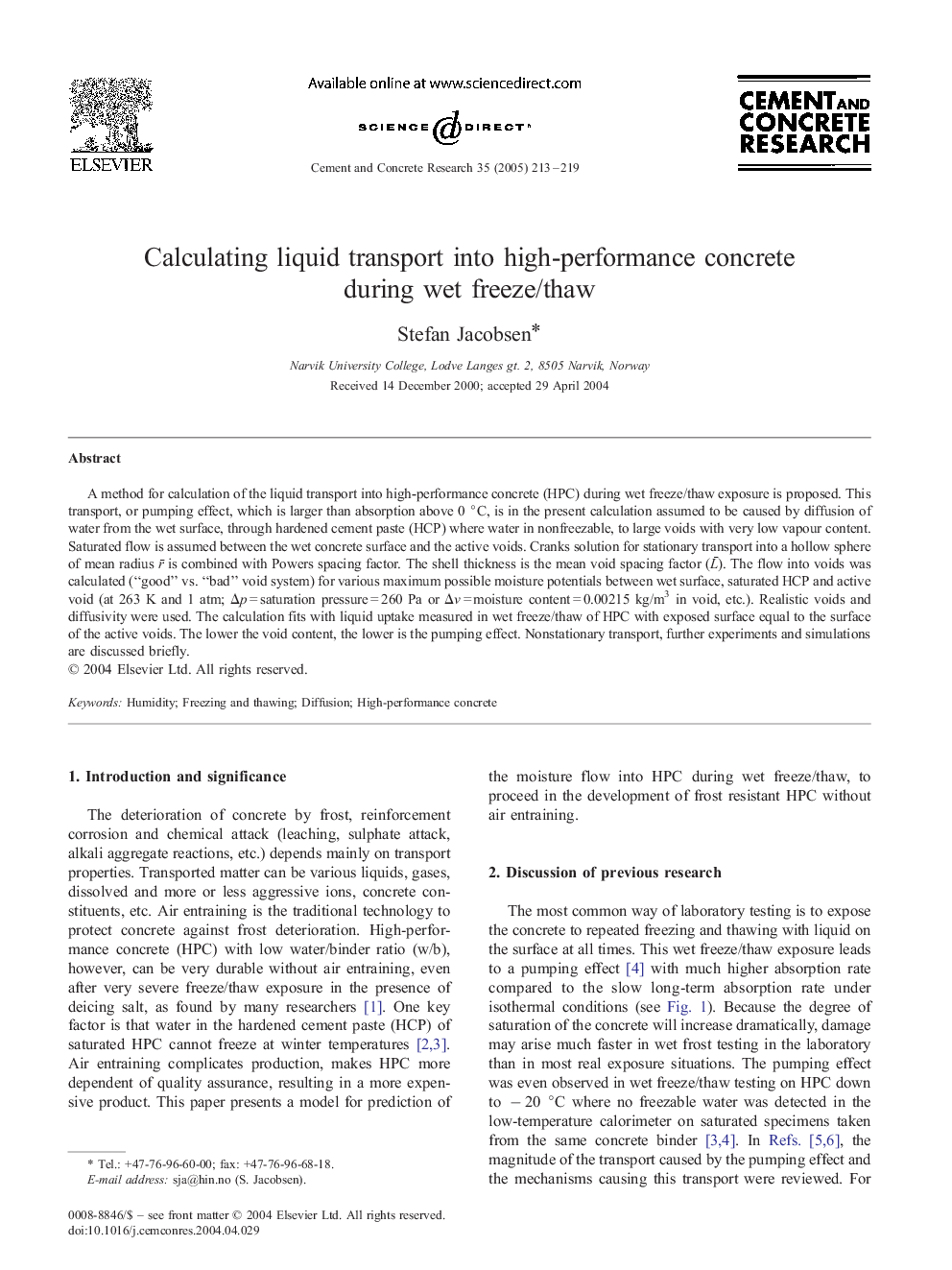| Article ID | Journal | Published Year | Pages | File Type |
|---|---|---|---|---|
| 10622786 | Cement and Concrete Research | 2005 | 7 Pages |
Abstract
A method for calculation of the liquid transport into high-performance concrete (HPC) during wet freeze/thaw exposure is proposed. This transport, or pumping effect, which is larger than absorption above 0 °C, is in the present calculation assumed to be caused by diffusion of water from the wet surface, through hardened cement paste (HCP) where water in nonfreezable, to large voids with very low vapour content. Saturated flow is assumed between the wet concrete surface and the active voids. Cranks solution for stationary transport into a hollow sphere of mean radius rÌ is combined with Powers spacing factor. The shell thickness is the mean void spacing factor (LÌ). The flow into voids was calculated (“good” vs. “bad” void system) for various maximum possible moisture potentials between wet surface, saturated HCP and active void (at 263 K and 1 atm; Îp=saturation pressure=260 Pa or Îv=moisture content=0.00215 kg/m3 in void, etc.). Realistic voids and diffusivity were used. The calculation fits with liquid uptake measured in wet freeze/thaw of HPC with exposed surface equal to the surface of the active voids. The lower the void content, the lower is the pumping effect. Nonstationary transport, further experiments and simulations are discussed briefly.
Related Topics
Physical Sciences and Engineering
Engineering
Industrial and Manufacturing Engineering
Authors
Stefan Jacobsen,
